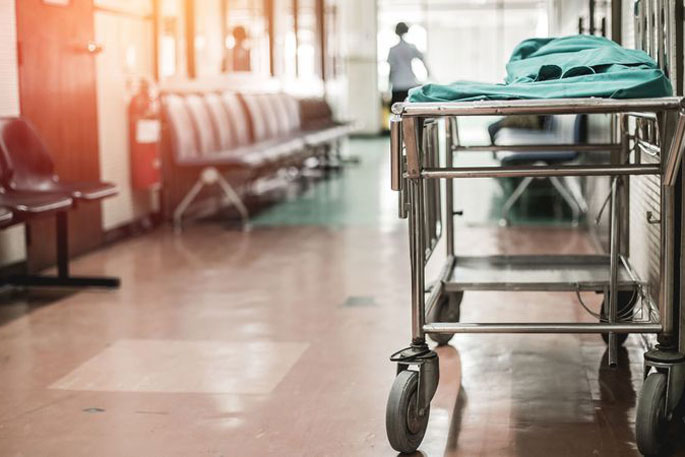Even in the best case scenario for Omicron, there's going to be huge pressure on already busy hospitals, a leading emergency doctor says.
Latest modelling by Covid-19 Modelling Aotearoa suggests a peak of 800 people in hospital on any given day at best, but well over 3000 at worst.
There is growing optimism the country will achieve the lower hospitalisation numbers - as long as people kept getting boosted and restrictions stay in place.
But College of Emergency Medicine head John Bonning says that will still mean a big few months for emergency departments.
Many have been extremely busy with normal work in the past few days, and having Covid-19 on top of that will be a big stretch.
The impact will be felt even more with the inevitable short-term loss of staff who will become infected themselves, he says.
"Currently we are very busy and very full of a lot of people with non-Covid illness and so it is going to be tough, and particularly in emergency departments."
But there is no need to panic, he stresses.
While there will be a huge amount of pressure for people working in health, there will still be care for those who need it.
"I don't want to put people off coming to emergency departments when they have terrible chest pain, or they're having a stroke, or they're haemorrhaging or they're elderly and they fall," he says.
He urges people to get boosted to keep themselves safe and to help keep hospital numbers low.
One of the modellers, Michael Plank, says he's also optimistic New Zealand will flatten the Covid-19 curve - as long as people kept getting boosted in big numbers.
His team has investigated three main trajectories - following the path of South Australia in the best case scenario (a peak of 800 people in hospital on any given day), London in the middle (resulting in a peak of 2100 people in hospital a day when applied to New Zealand), and New York in the worst (a peak of 3300 per day in hospital).
All of those figures assumed a 90 per cent boosted eligible population, with the figures considerably worse if just 70 per cent took up the booster.
Professor Plank says the most likely scenario is South Australia, or a mix between South Australia and London.
"If we can really keep the momentum going with boosters and we continue the momentum with the five to 11 year old vaccinations then we stand a really good chance of avoiding some of the worst outbreaks we've seen in other countries," he says.
"But nevertheless I am still worried about the amount of pressure that our health care system could have during the peak of the outbreak, so we can't afford to be complacent.
"We can't afford to drop our guard."
All the measures to slow or flatten the curve were still crucial, he says.
The modelling has predicted a range of deaths with the different scenarios from about 400 to about 1400.
Professor Plank says that is the least certain factor in the modelling because fewer people had died from the variant, so there is less statistical evidence to base the modelling on.



2 comments
Good Idea?
Posted on 09-02-2022 10:17 | By Megalodon
So if our hospitals are going to be under pressure, let's mandate to get rid of some more nurses and doctors ... let's say any who have not been vaccinated in the last 3 months! That should help ease the pressure ... NOT.
Not surprising
Posted on 09-02-2022 11:41 | By Slim Shady
Well Kiwis do want the borders shut. Doctors and nurses have left in droves and cannot be replaced with closed borders. You get what you ask for.
Leave a Comment
You must be logged in to make a comment.